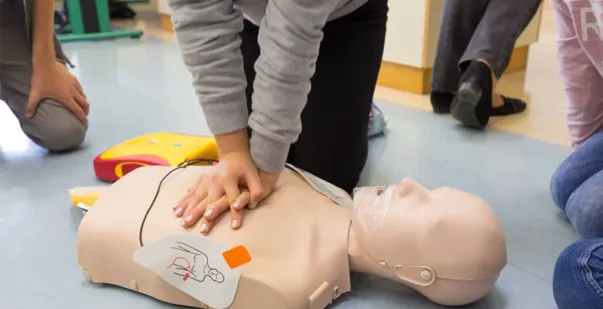Table of Content
- Introduction
- Ways to Minimize Interruptions in Compressions with an AED
- Common Challenges in Minimizing Compressions
- Why Should I Minimize Interruptions in Compressions During CPR?
- Maximizing AED Use with Minimal Interruptions!
Sudden cardiac arrests (SCAs) are emergencies that happen without a warning. Over 1000 out-of-hospital cardiac arrests (OHCA) happen in the United States alone each day. However, using an automated external defibrillator (AED) with high-quality chest compressions can increase the chances of the victim’s survival to a great extent. Several factors may influence these resuscitation efforts, but the major one involves the attempt to minimize interruptions in compressions when using an AED.
In this guide, we will discuss the importance of uninterrupted compressions during cardiopulmonary resuscitation (CPR) and other relevant details.
Master ACLS Now
Get ACLS certified with confidence
Ways to Minimize Interruptions in Compressions with an AED
Rescuers should minimize interruptions in chest compressions, especially when using an AED, because it directly influences the effectiveness of resuscitation efforts. There are also chances of a positive outcome for the victim who may have suffered a sudden cardiac emergency.
Below are the best practices that will help you decide which actions are appropriate to minimize interruptions in chest compressions.
-
Pre-attach AED Pads
Pre-attaching AED pads while continuing chest compressions is an effective strategy to minimize interruptions as required. The process involves placing the pads on the victim when the AED is available. However, you do not need to pause the compressions until necessary. Several AED models also enable you to apply the pads without analyzing the heart rhythm immediately, which helps save more time.
-
Use a Metronome or CPR Feedback Device
A CPR feedback device or a metronome can help you maintain the correct chest compression rate and depth in victims. You can integrate these devices with AEDs or use them as standalone units. The tools help keep the rescuer on pace to ensure high-quality chest compressions with minimal interruption.
-
Coordinate Actions Among all Rescuers
Proper communication and coordination are recommended to minimize interruptions in compression among rescuers. The best way to follow this process is by assigning specific roles. For instance, one person performs compressions while the other prepares the AED. Then, the third rescuer monitors time and provides additional CPR support. Such efficient communication is important, especially when transitioning between compressions and defibrillation when saving victims.
Training and Regular Drills
If you are a healthcare provider or rescuer who uses AEDs regularly, you must receive regular training and drills. Simulated scenarios help you minimize interruptions in compressions. As a result, it helps make real-life applications smoother and more efficient while keeping your skills sharp all the time.
Follow All AED Prompts
Modern AEDs can guide you through the entire process of providing chest compressions and other CPR techniques to a victim. Make sure you follow the voice prompts and instructions to minimize unnecessary delays. AEDs often advise pausing chest compressions at times to help you analyze the victim’s heart rhythm and deliver shocks if needed.
Conduct Hands-free Defibrillation
You must always use AEDs that support hands-free defibrillation. This particular technology allows you to continue giving chest compressions while the AED is preparing to deliver a shock. You may pause the compressions momentarily once the AED indicates it is ready to deliver shock to the victim.
Follow Minimal Pause Techniques
You may follow techniques like “compressions during charging” to reduce pauses significantly. This approach enables you to continue chest compressions while the AED is charging. You may choose to stop giving chest compressions when the AED instructs you to deliver the shock. Make sure to resume immediately after the shock is administered to the victim.
Read More: How to Use an AED on an Infant?
Why Should I Minimize Interruptions in Compressions During CPR?
The chances of a victim’s survival increase to a great extent when you know the perfect strategies to minimize interruptions in chest compressions. This also involves the prompt use of an AED to deliver shock to victims when necessary. On that note, here are the key reasons that highlight the importance of minimizing interruptions during compressions:
Maintaining Perfusion Pressure
Giving chest compressions continuously helps maintain blood pressure, which ensures a steady blood flow to all the organs in the body. Interruptions in compressions may lead to less delivery of blood to organs like the heart and the brain. As a result, it causes significant damage to organs.
Improving the Success of Defibrillation
Uninterrupted compressions always help increase the likelihood of a successful defibrillation shock. In these cases, the victim’s heart is more likely to respond to electrical therapy if effective chest compressions precede it.
Reducing All Complications
Interruptions in chest compressions may often delay the return of spontaneous circulation (ROSC). Prolonged interruptions also increase the risk of health complications in victims, such as neurological damage, and decrease the chances of their survival at times.
Adhering to CPR Guidelines
CPR guidelines always focus on the importance of minimizing interruptions in chest compressions. Adhering to these necessary guidelines is essential for you as a healthcare provider or rescuer. This enables you to provide the most effective and evidence-based resuscitation care to the victim.
Team Coordination and Efficiency
Minimizing interruptions requires effective communication and coordination among team members, especially during a resuscitation effort. Efficient teamwork ensures a smooth transition between ventilations, compressions, and other necessary interventions used to save a victim’s life.
Read More: How Does an AED Work?
Common Challenges in Minimizing Compressions
Knowing what is recommended to minimize interruptions in compressions is not enough for healthcare professionals or rescuers. You must also understand that the procedure may not work every time. This involves knowing the common challenges associated with minimizing compressions and their associated solutions, as mentioned below.
Dealing with Clothing and Accessories
Clothing, jewelry, and medical devices can interfere with AED pad placement at times. The best thing to do here is to remove or cut away clothing as soon as possible to expose the victim’s chest. You must also avoid placing pads over metal jewelry or medical devices directly.
Managing Environmental Factors
Conductive or wet surfaces often pose risks when you use an AED on the victim. Make sure to move the person to a dry, non-conductive surface if possible. Dry the victim’s chest before applying the AED pads if you find them in a wet place or environment.
Addressing Technical Issues
Maintain the AED regularly and check that its batteries and pads are within their expiration dates. Regular checks and maintenance can help prevent technical issues that cause delays during emergencies.
Maximizing AED Use with Minimal Interruptions!
Every correct action that you take in a high-stakes environment can help save a victim’s life. This involves knowing the right techniques to minimize interruptions in compressions when using an AED. This enables you to maximize the chances of the victim’s survival, especially in out-of-hospital situations. However, you must receive proper training to implement AEDs when necessary. This involves doing certifications to understand the workings of these devices and using them to save lives in emergencies. Make sure to approach accredited organizations with expert trainers to acquire such life-saving skills.







